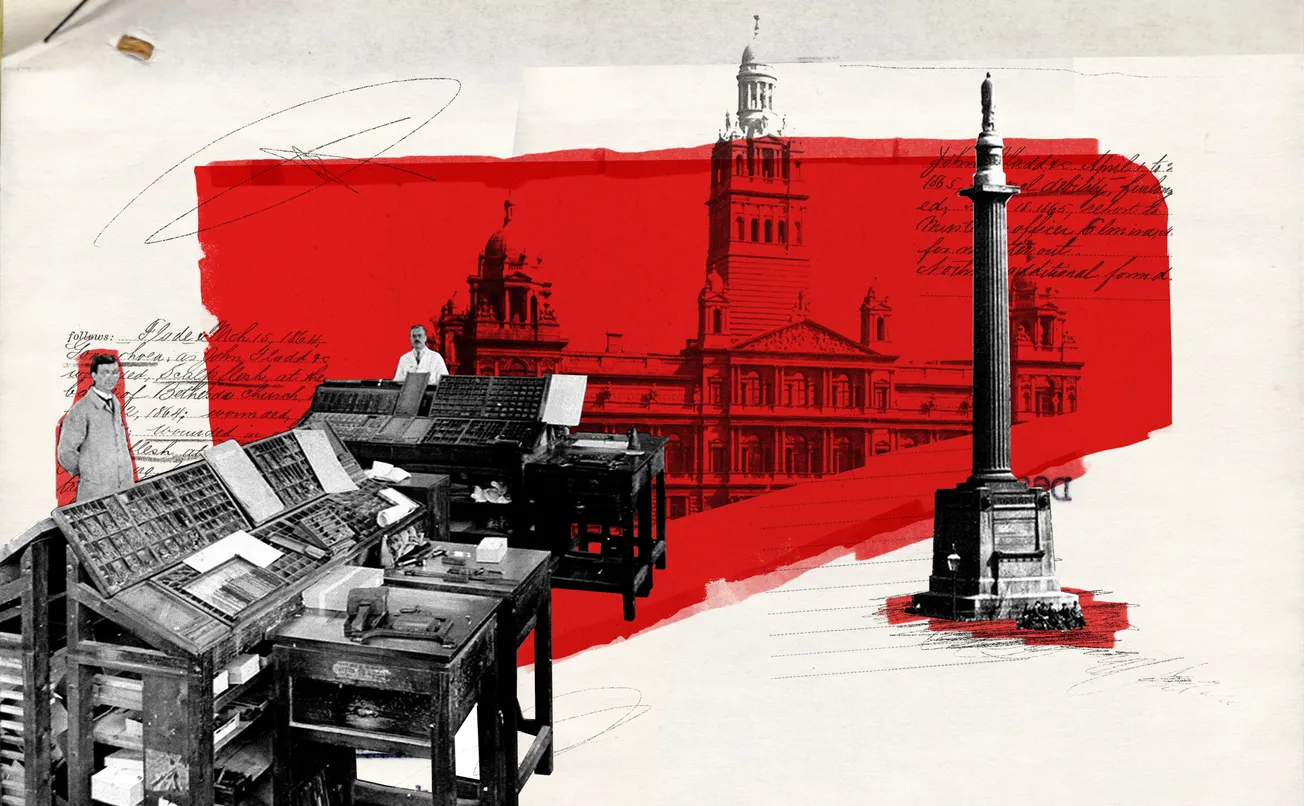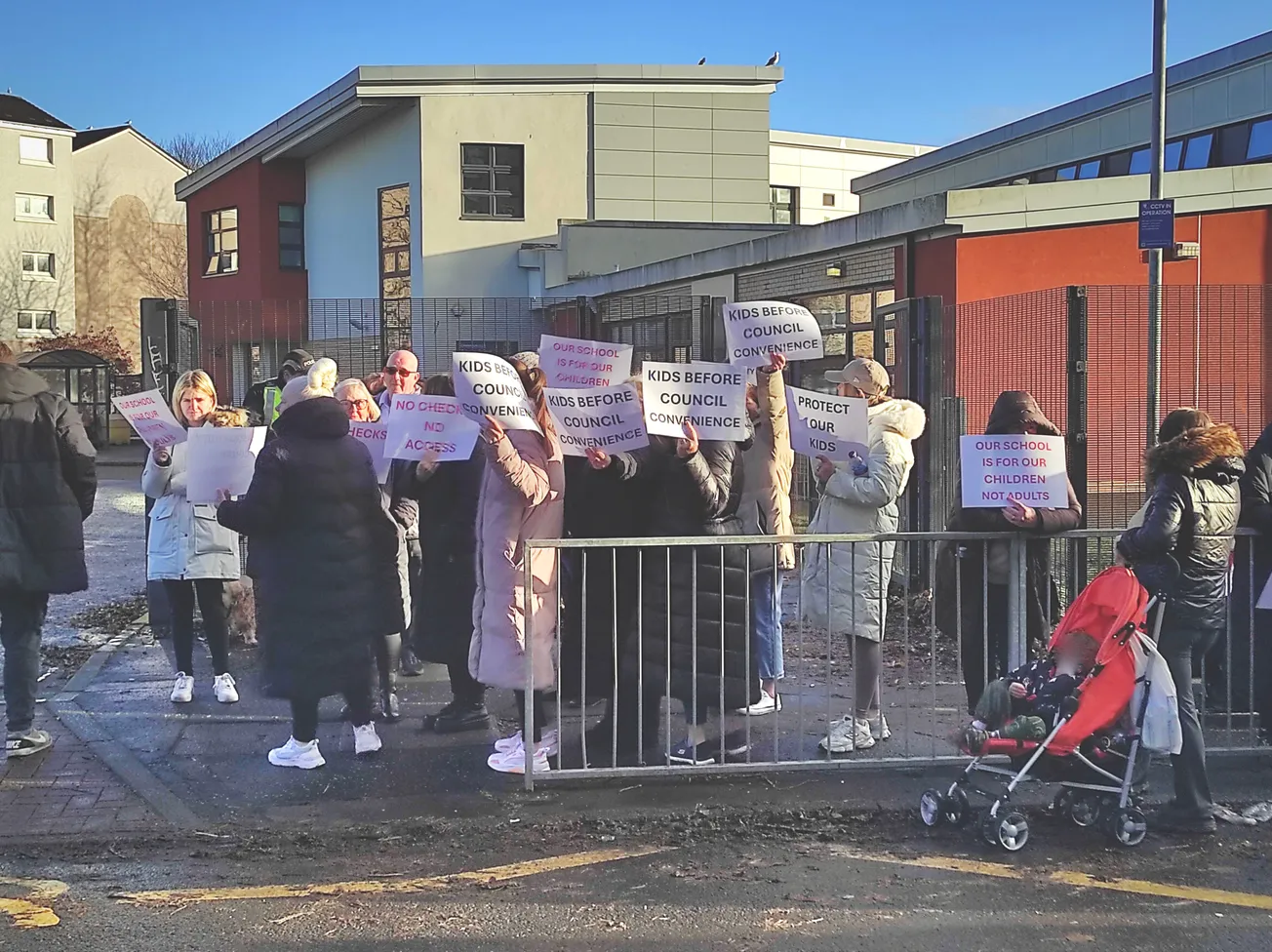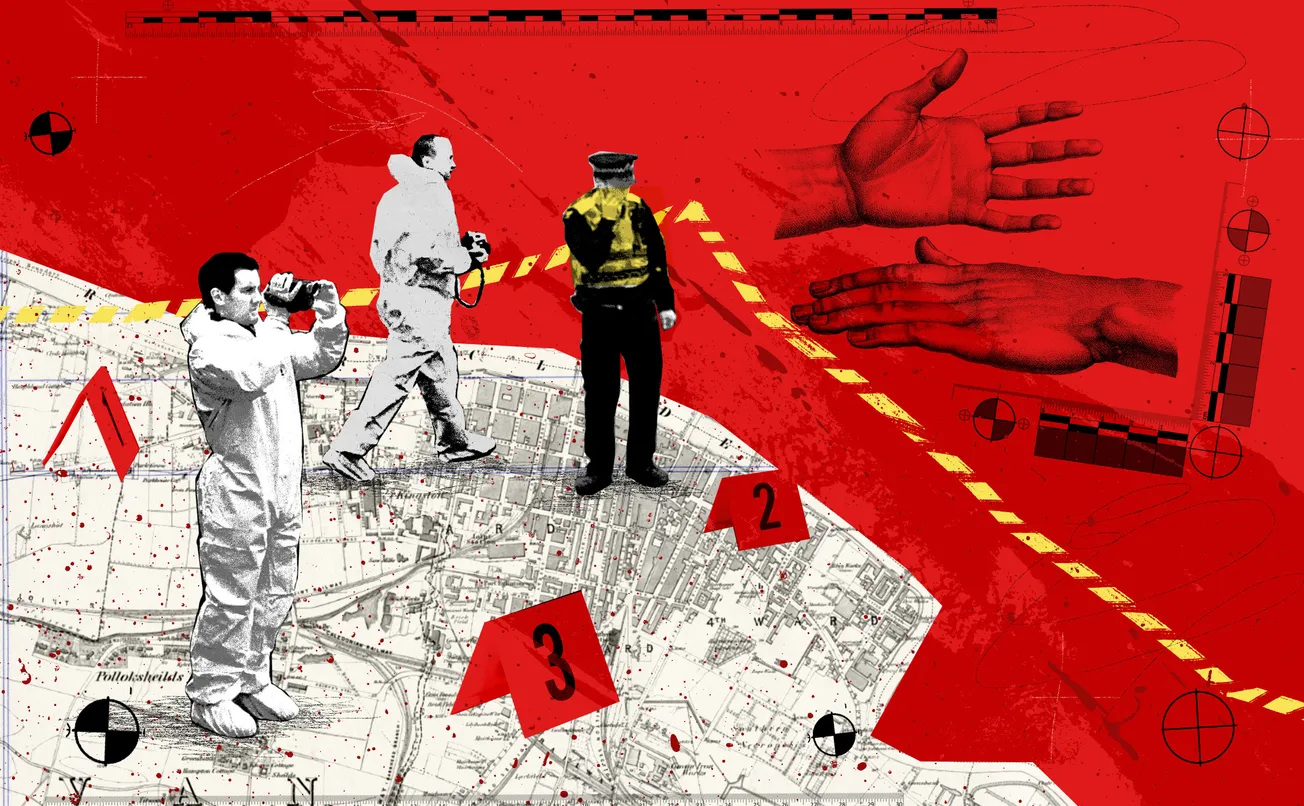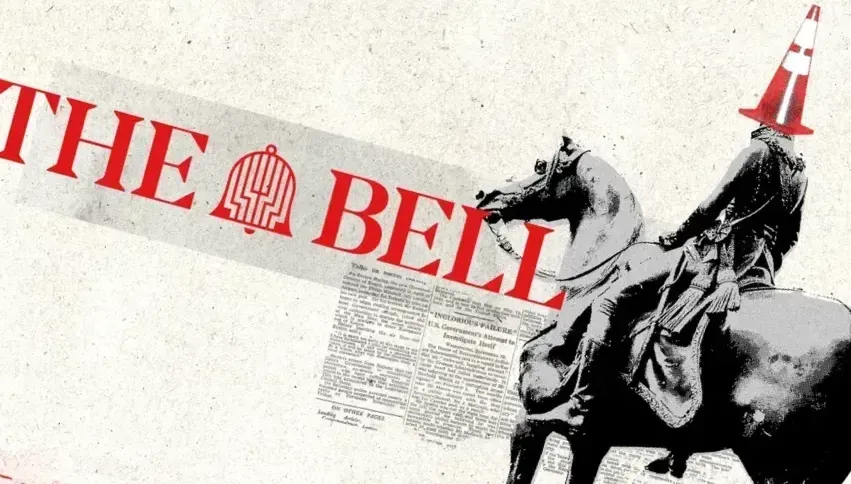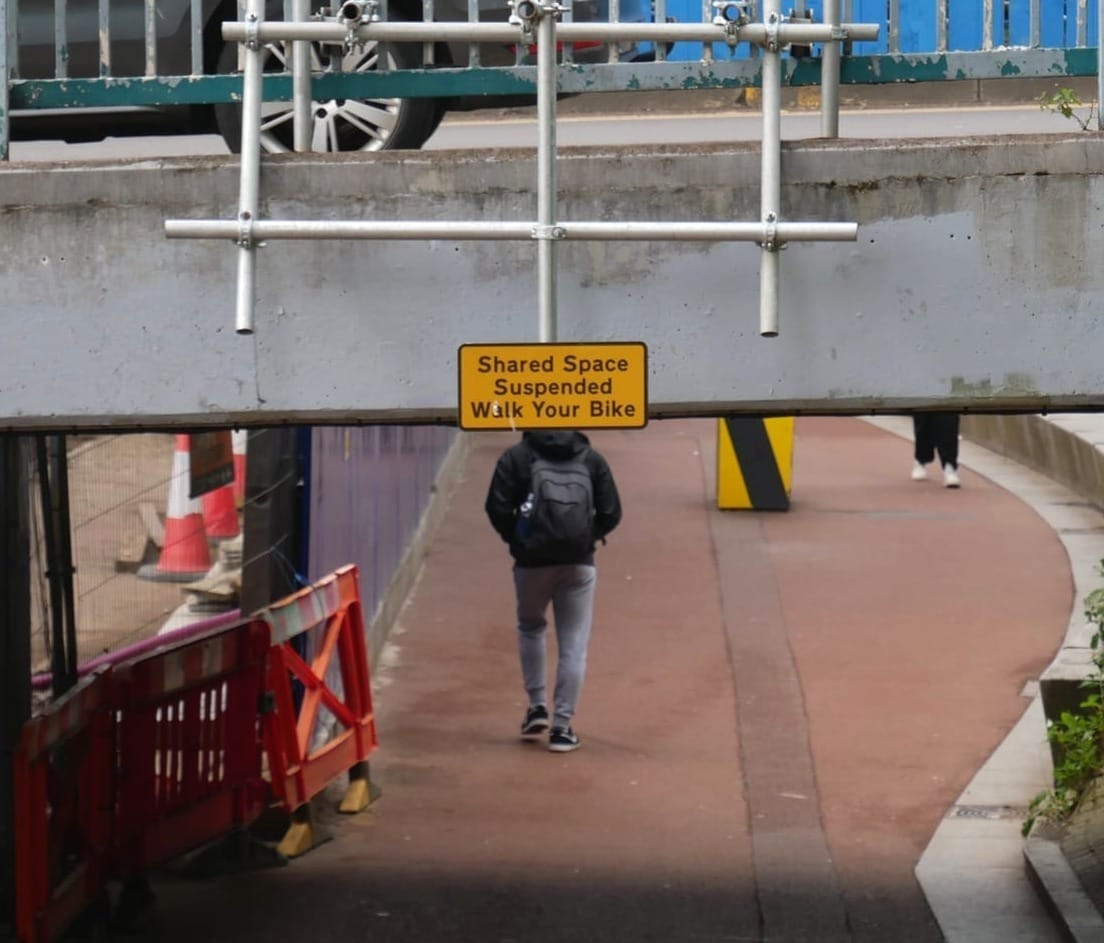It’s twilight on a cold February evening but in the concrete cocoon of the underpass beneath the Woodside Viaduct, time is meaningless. I’m getting ready to do battle.
My adversary is approaching from the opposite direction. I’m on the left side of the subway, flanked by a temporary wall which has been erected to separate pedestrians from the building works ongoing since 2021. My nemesis is one of those pedestrians. When he clocked me coming through, his path diverted towards me, edging closer and closer. As we draw level, it becomes clear there is no space left and we collide, leaving me wedged for an uncomfortable moment between the temporary wall and the man’s broad shoulders.
To be honest, I can see it from his perspective. You see, I haven’t totally followed the instructions of many signs posted at the entrance of the underpass. Cyclists are supposed to dismount. I have sort of dismounted from my bike; travelling at walking speed but with my right foot on the left pedal, scooting. He’s making a point. It’s just one of many hostile interactions the tunnel has seen in recent years as a seemingly infinite misery-go-round of scaffolding, drilling and people being squeezed together has developed.
The underpass has become a pinchpoint. Once a bustling active travel route stretching from Garscube Road into town, the gradual expansion of maintenance works being done to the motorway overhead has transformed this thoroughfare into a warren of makeshift barriers and hoardings. It’s been four years since the project to fix this part of the M8 began. Since then, it’s ballooned into one of the most complex remedial endeavours in Scotland with over £100million already spent, The Bell can reveal. The works are bringing misery to those travelling on the M8, but also those below it in Glasgow, from local residents to those passing through on foot, two wheels or four. So: when will it end?
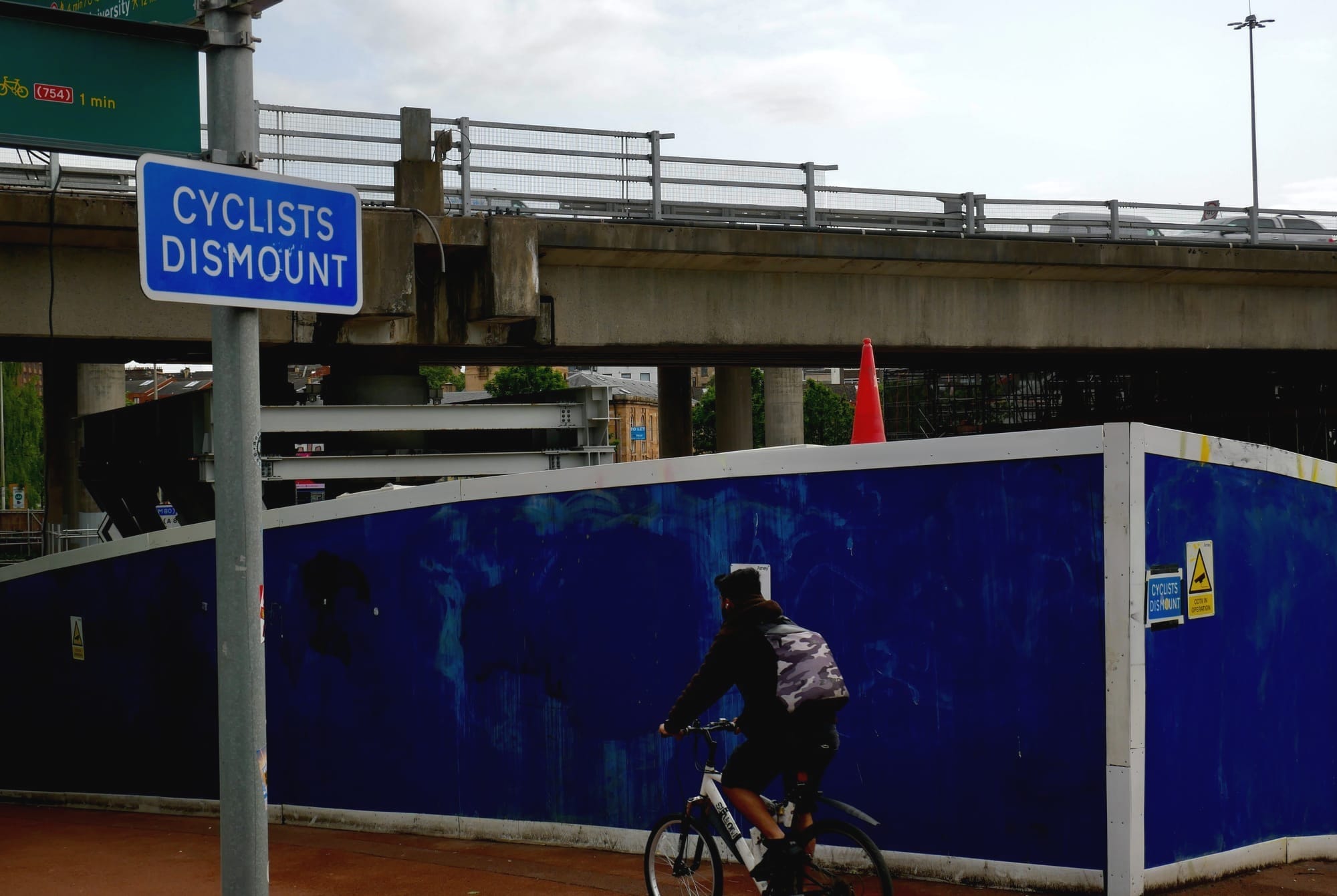
Bad beams
It all started in 2020, when Transport Scotland carried out an inspection of the eastbound M8 at the Woodside Viaduct. What they found was not good — reports from 2020 and 2021 use language like “structural deterioration”, and “emergency” in reference to the crossheads, beams that run perpendicular to the motorway and transfer its traffic load onto columns. A video from that time illustrates how these crossheads and other vital components were badly corroded. If they weren’t fixed, a terrible accident, such as a collapse of the road, could occur. Repairs were needed, urgently. But, with 150,000 cars using the road daily, the closure of a section of Scotland’s busiest motorway would have meant detours through surrounding neighbourhoods for years.
So the decision was made: the M8 would be repaired while remaining open, an enormous engineering challenge. To allow this to happen, 23 bespoke temporary props would have to be built to transfer the load of the motorway away from the gammy crossheads and onto said props. Transport Scotland and Amey, the engineering firm contracted to do the works, are at pains to stress just how complex an undertaking this is. Each prop has to be specifically designed in line with local topography and hazards below, like the 19th century subway system, Victorian water mains, gas pipes, and streets.
Enjoying this edition? You can get two totally free issues of The Bell every week by signing up to our regular mailing list. Just click the button below. No cost. Just old school local journalism.
At first, the building of these props was predicted to take an optimistic two and half years. But now, four years later and with only 13 of the 23 props finished, Transport Scotland has informed The Bell that the current estimated date for completion is “under review”.
Widely reported in the media, an updated early 2026 completion date is quietly being reassessed. The budget has also ballooned, from £33m in 2021 to an estimate of £152m. But even this isn’t accurate — the true figure is likely to be higher. An FOI request submitted by The Bell reveals that cost projections are being revised because “recent investigations are still ongoing”. This is vital national infrastructure, funded by the public purse (via Transport Scotland), which is what our taxation system is designed to do. Yet it’s concerning that this is now a project without an end date or a concrete cost to plan around — and this is just the beginning.
Comments
How to comment:
If you are already a member,
click here to sign in
and leave a comment.
If you aren't a member,
sign up here
to be able to leave a comment.
To add your photo, click here to create a profile on Gravatar.


